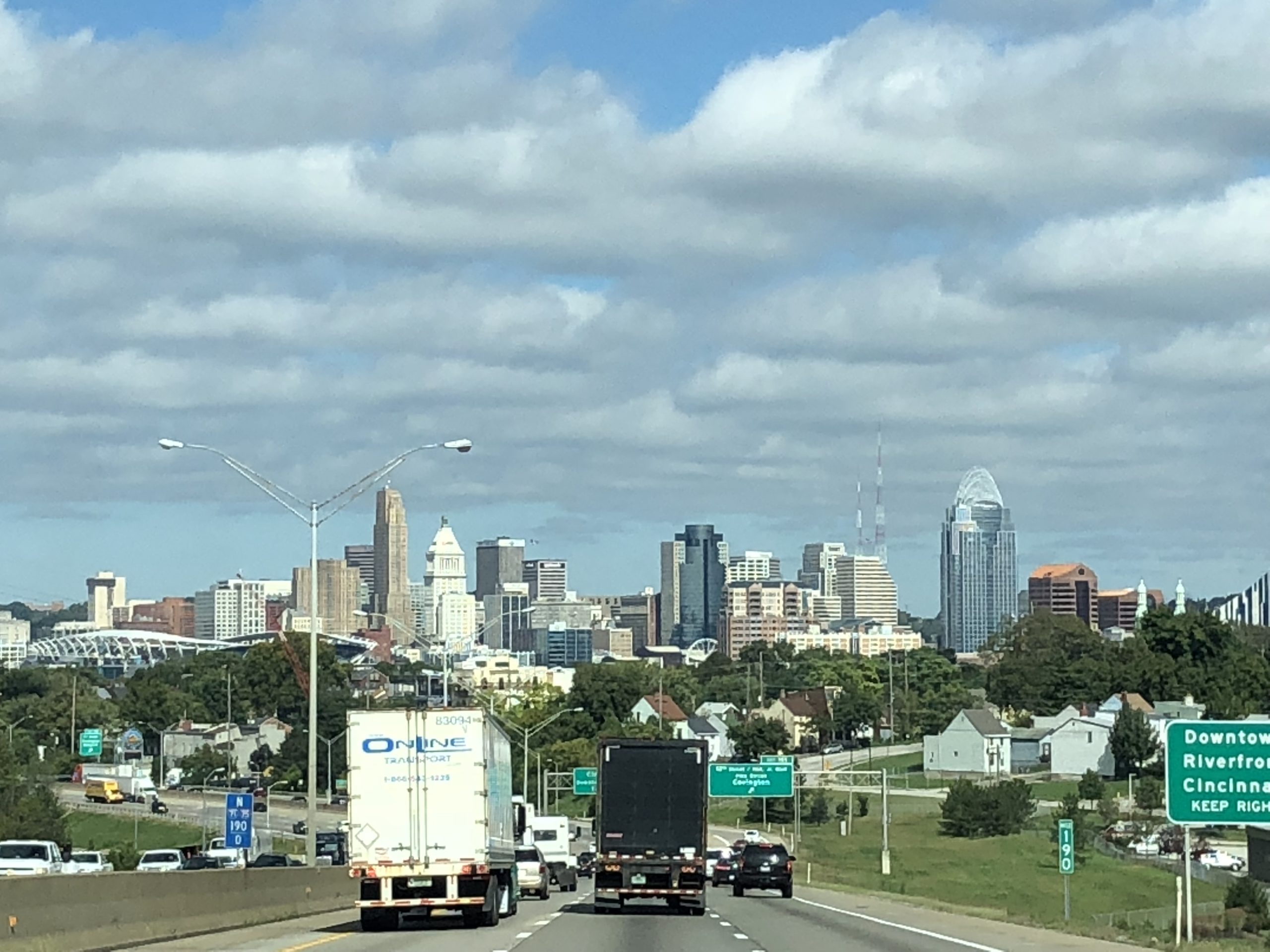The origin of the name, Cincinnati, our next destination, goes all the way back to ancient Rome. Lucius Quinctius Cincinnatus was a Roman patrician in the early Roman Republic. To defend against an outside invasion, Cincinnatus was authorised by the senate to assume control of the state, gaining near-absolute authority by the end of the crisis. Having done what he needed to do, instead of consolidating power and ruling for life, as is the way of dictators ancient and modern, Cincinnatus stepped back from power and retired to a life of farming. He thus became a legendary icon of civic virtue, modesty and outstanding leadership. To many, George Washington was America’s Cincinnatus. A number of US revolutionary War veterans formed the “Society of the Cincinnati” in his spirit. And the new settlement on the Ohio River (chartered 1788) was named in their honour.
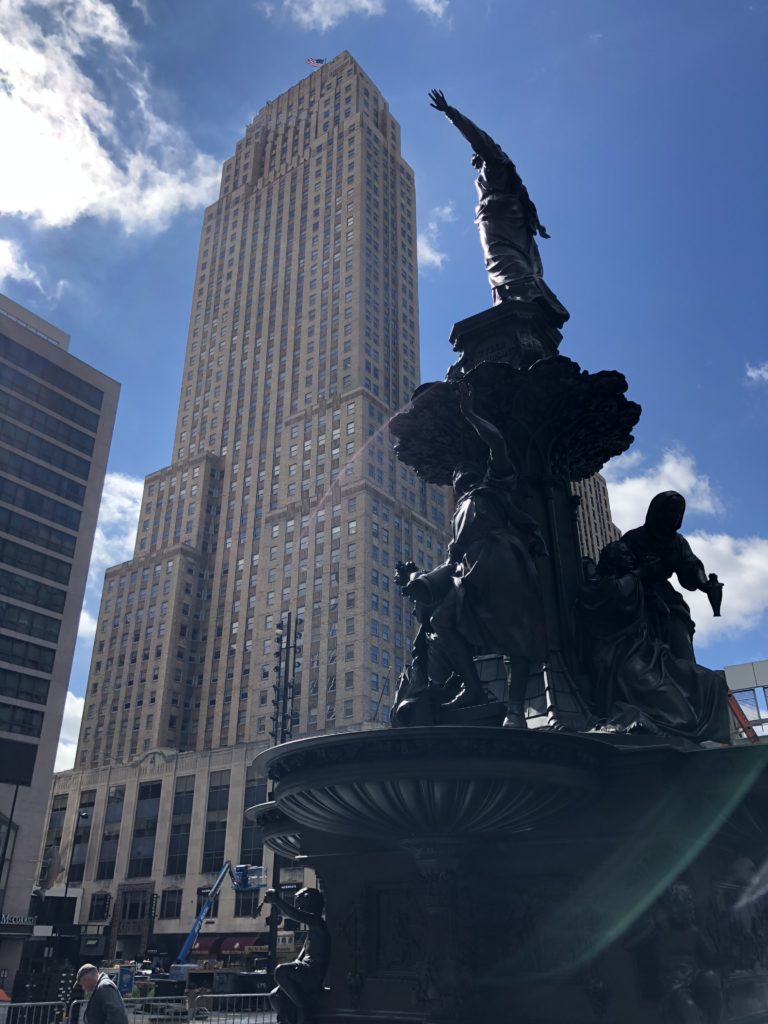
Our first stop in the city was to go up to the top of the Carew Tower to get an aerial view of the surroundings. The 49-story, 175-metre tall, Art Deco building is the second-tallest in the city and was completed in 1930. It made its mark in the world of architecture and is considered to have been an early prototype of the “urban mixed-use development”, or a “city within a city”. The place retains a lot of charm.
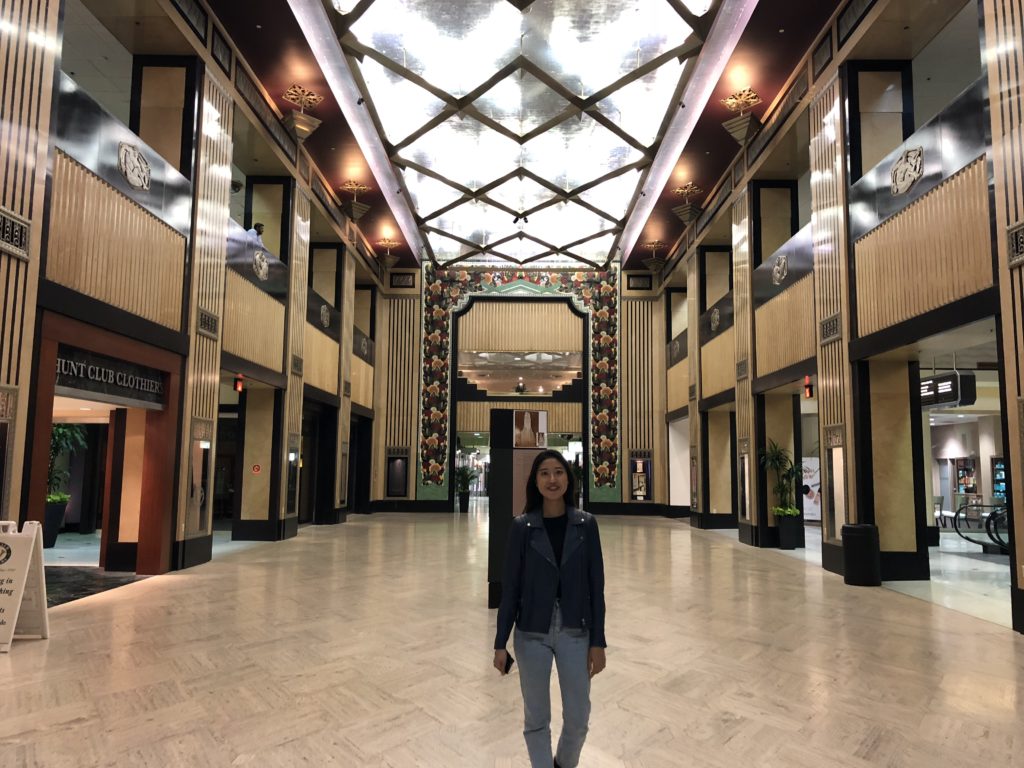
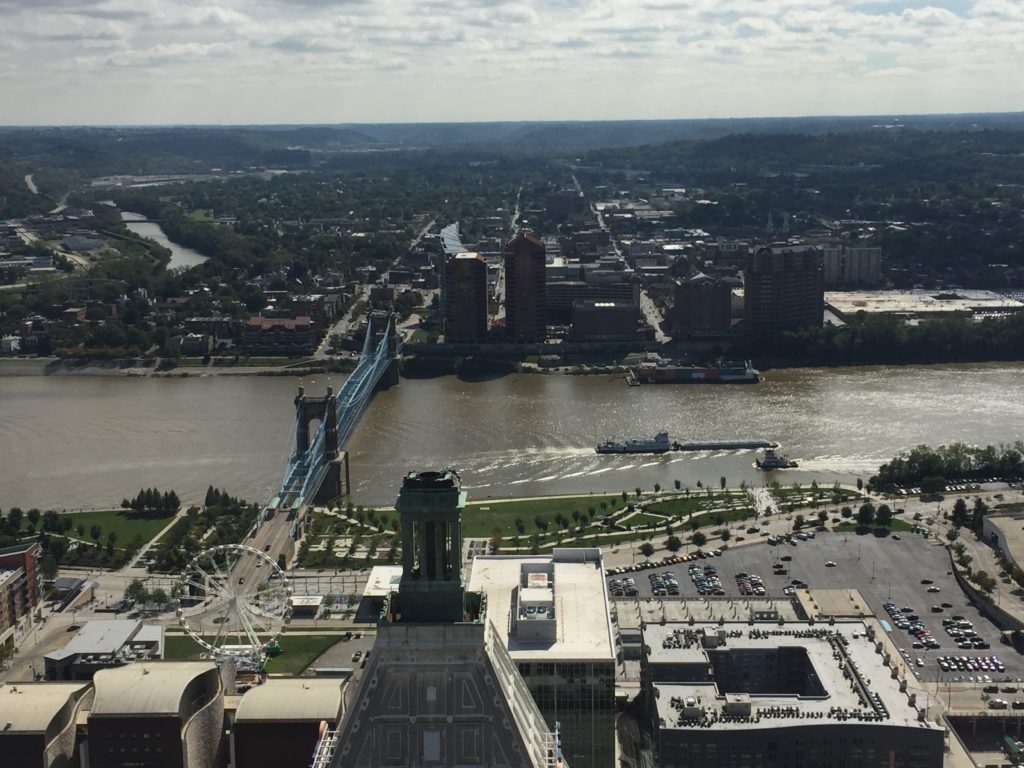
Back in the day, Cincinnati boomed as a river port at the confluence of the Ohio and Licking Rivers (you can see both in the picture above). The city attracted a surge of German-speaking immigrants, which significantly influenced the city’s culture. The rise of the railroads saw some of Cincinnati’s power wane in favour of major rail hubs like Chicago and St. Louis, but growth did continue. Today, the greater metropolitan area is actually one of the fastest growing economies in the Midwest, and holds the largest population in Ohio (2.1mil).
A number of major companies are headquartered in Cincinnati like the consumer goods giant, Procter & Gamble. The story goes that Procter (an English candle maker) and Gamble (an Irish soapmaker) independently immigrated to the US and settled in Cincinnati, where they happened to marry sisters. Their father in-law persuaded them to become business partners, and P&G was born. The city is also home to giants like Kroger and Macy’s.
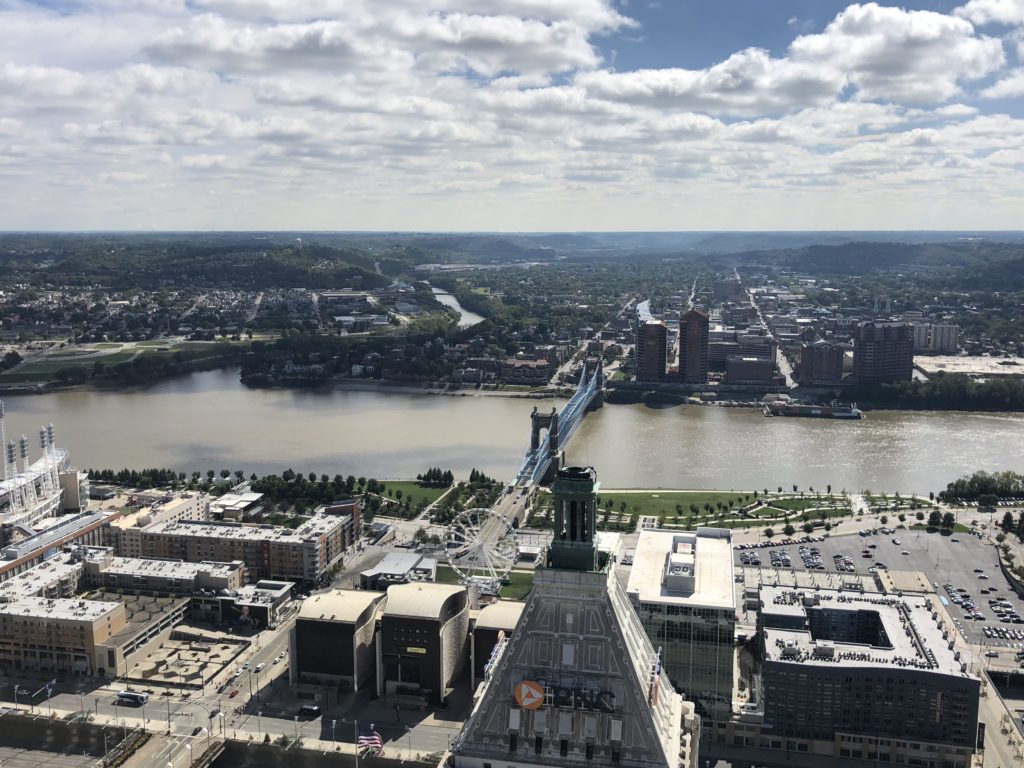
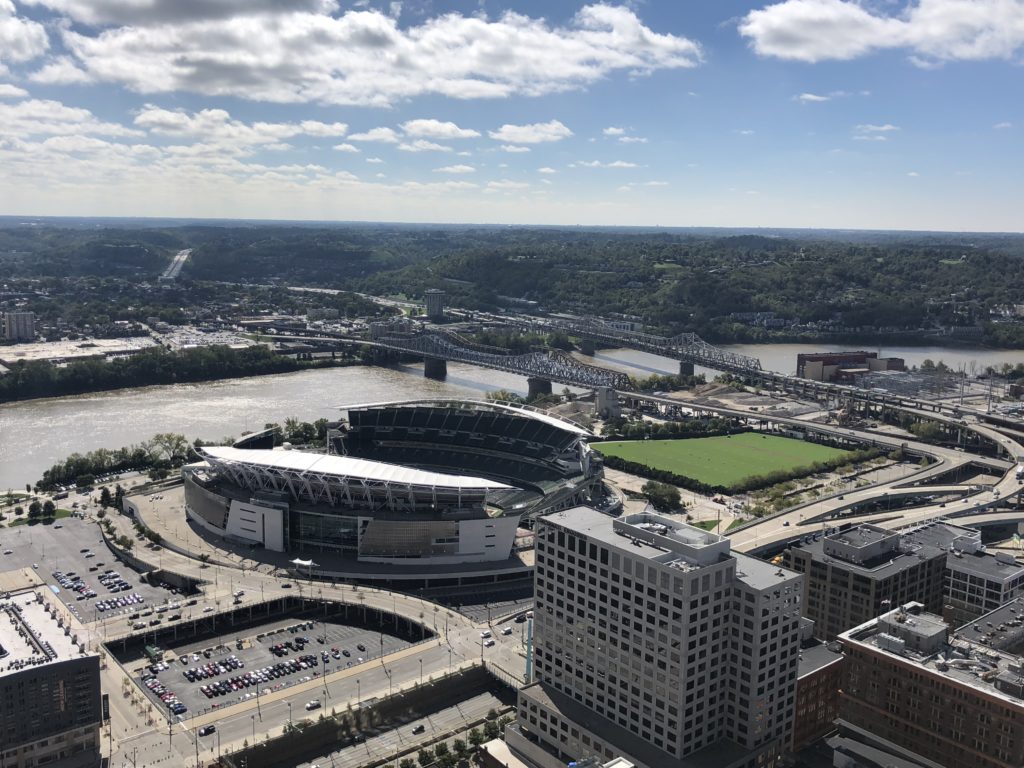
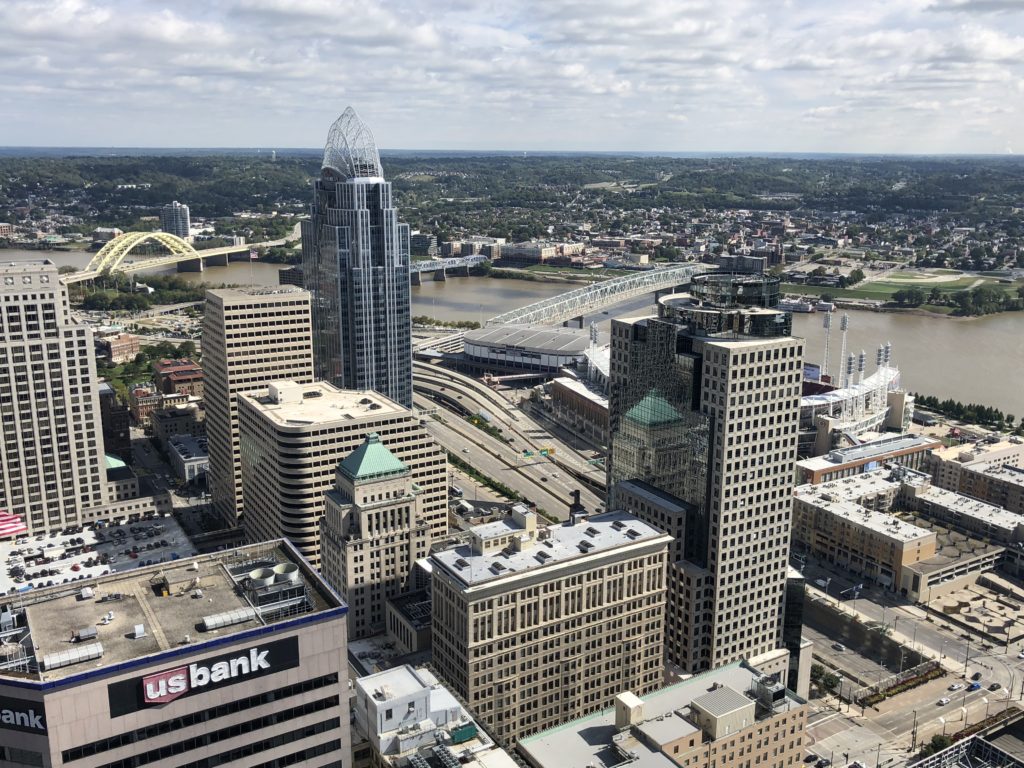
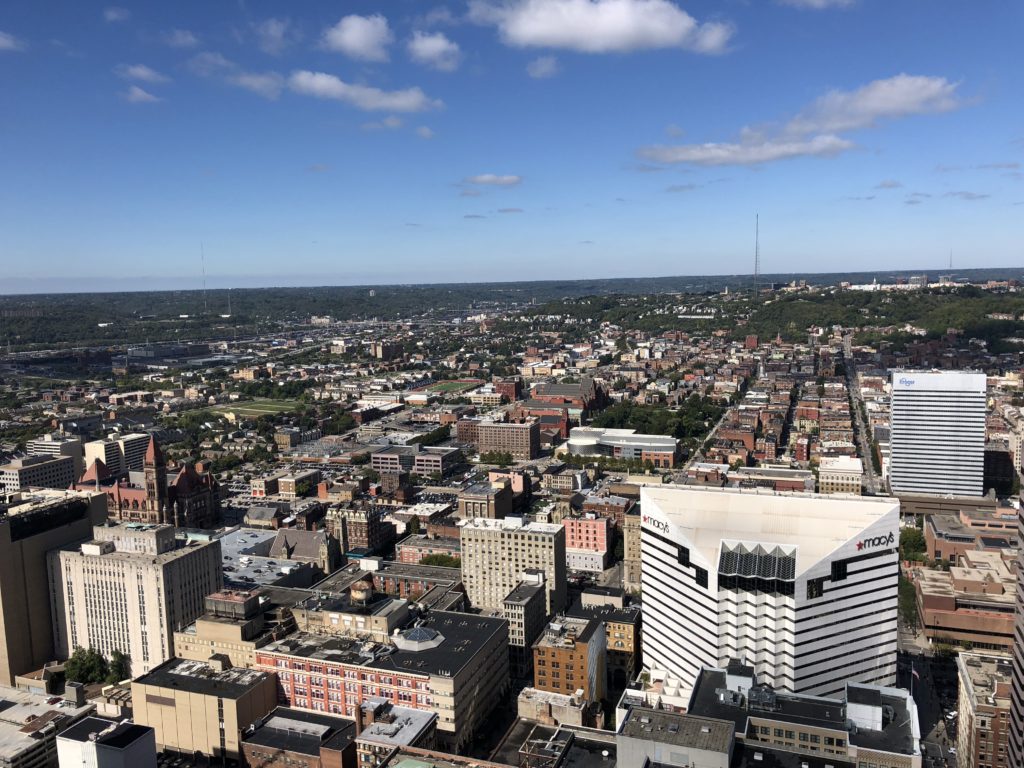

One place that came highly recommended was the Cincinnati Art Museum. It was founded in 1881 and based just behind Mt. Adams in the Eden Park neighbourhood, a lovely part of town. The museum houses a huge range of items from ancient Egypt, Persia, the Ottoman Empire, European impressionists and local Cincinnatians. It turned out to be a really impressive, top-class museum, something we hadn’t expected.
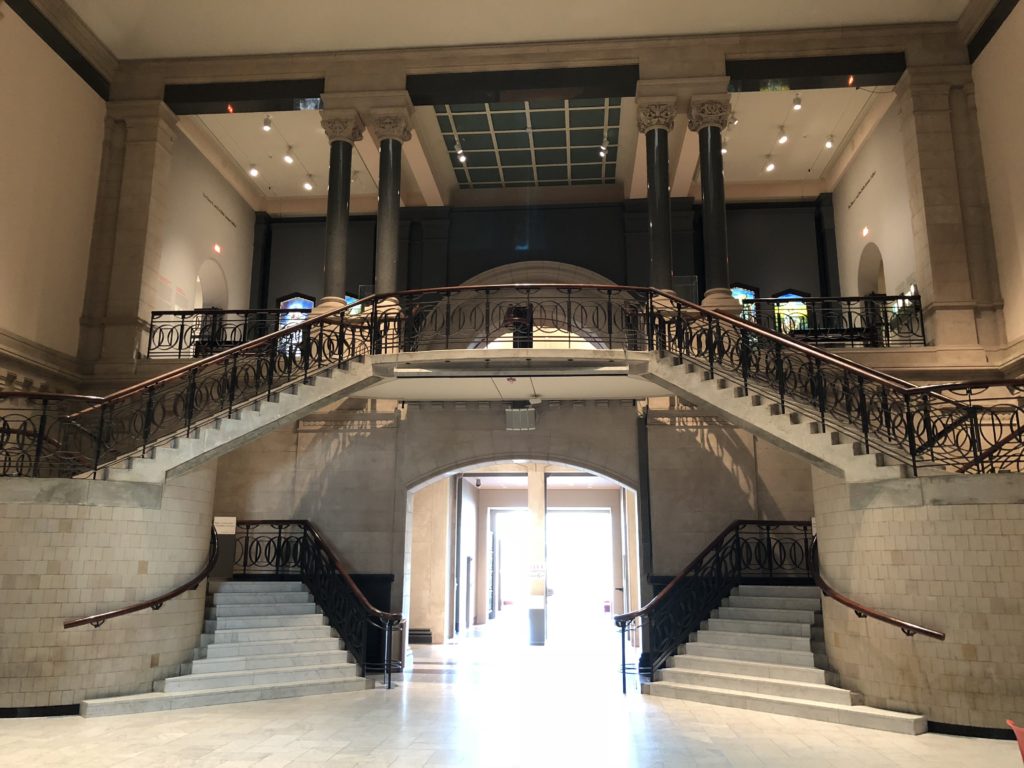
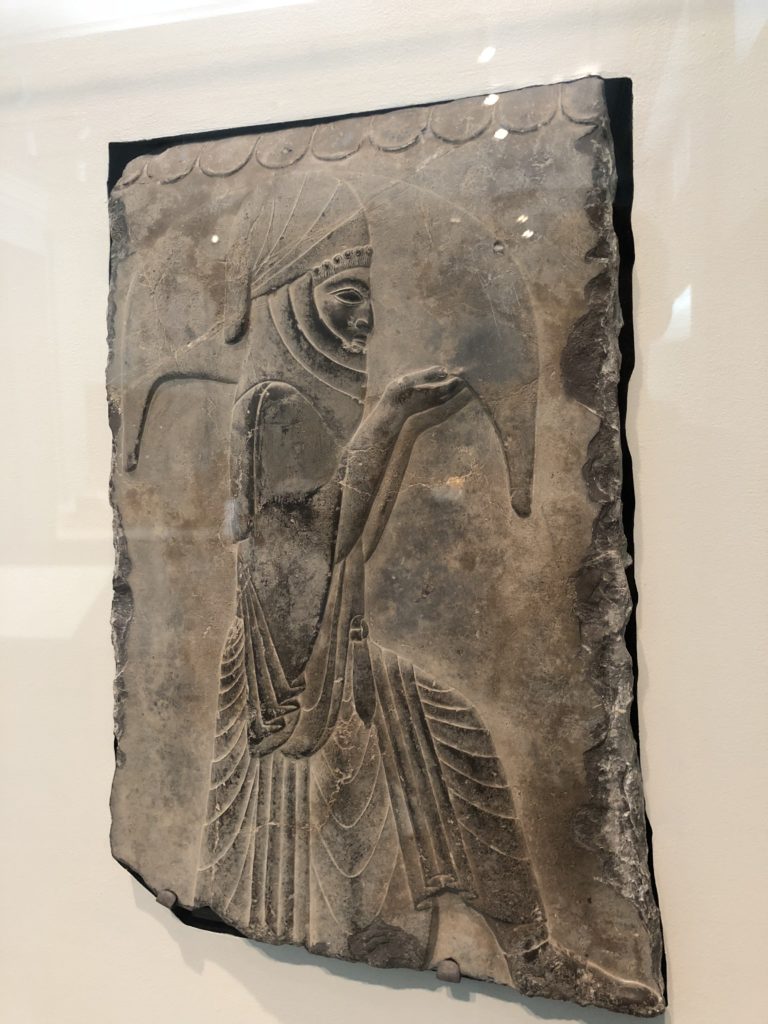
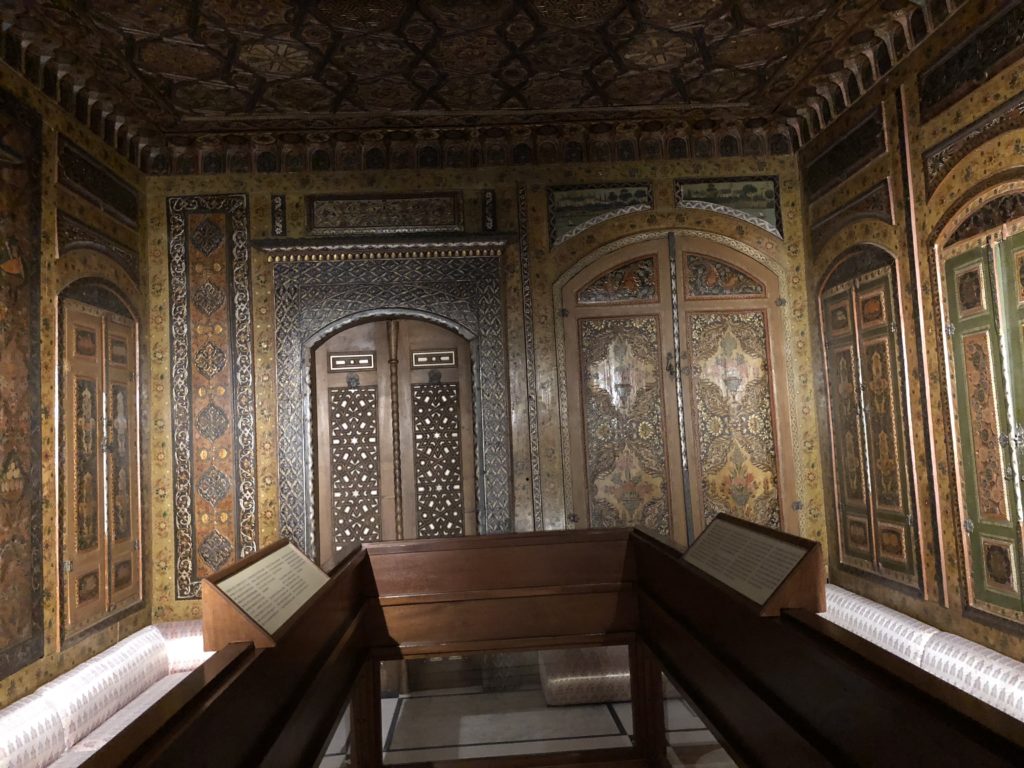
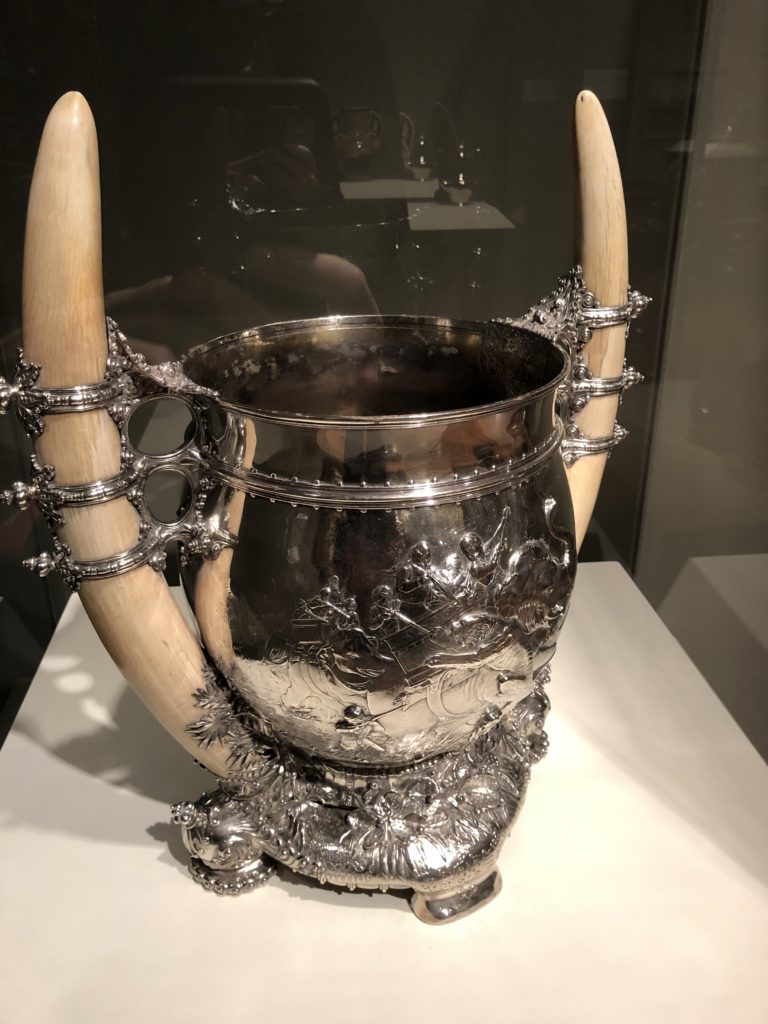
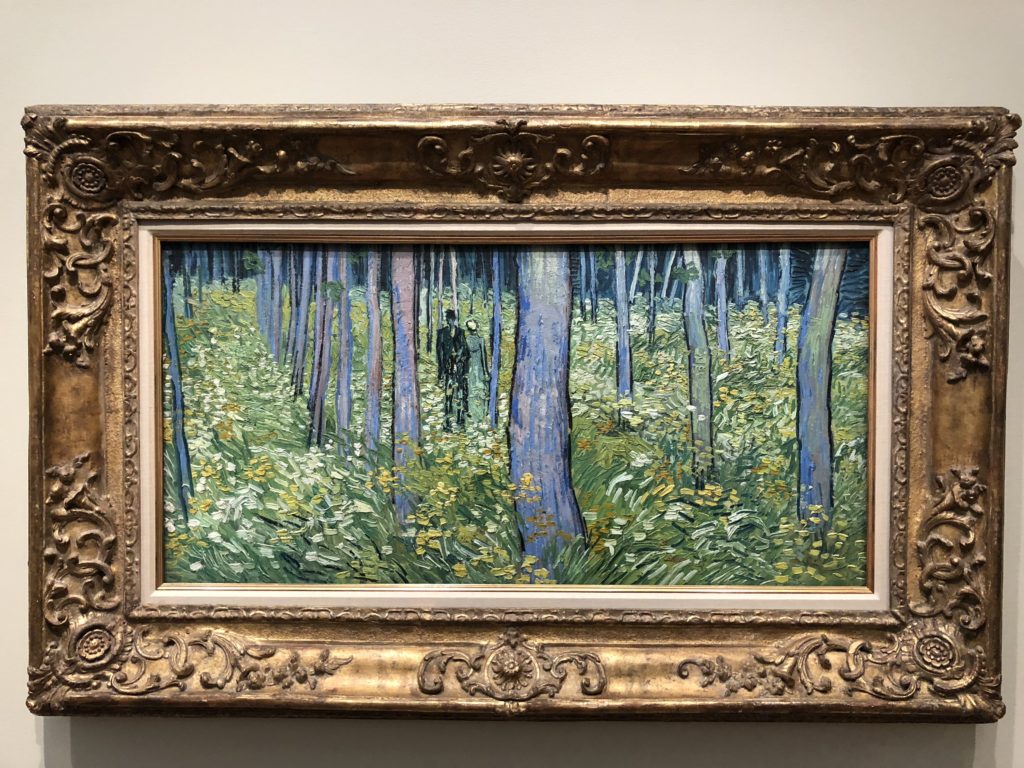
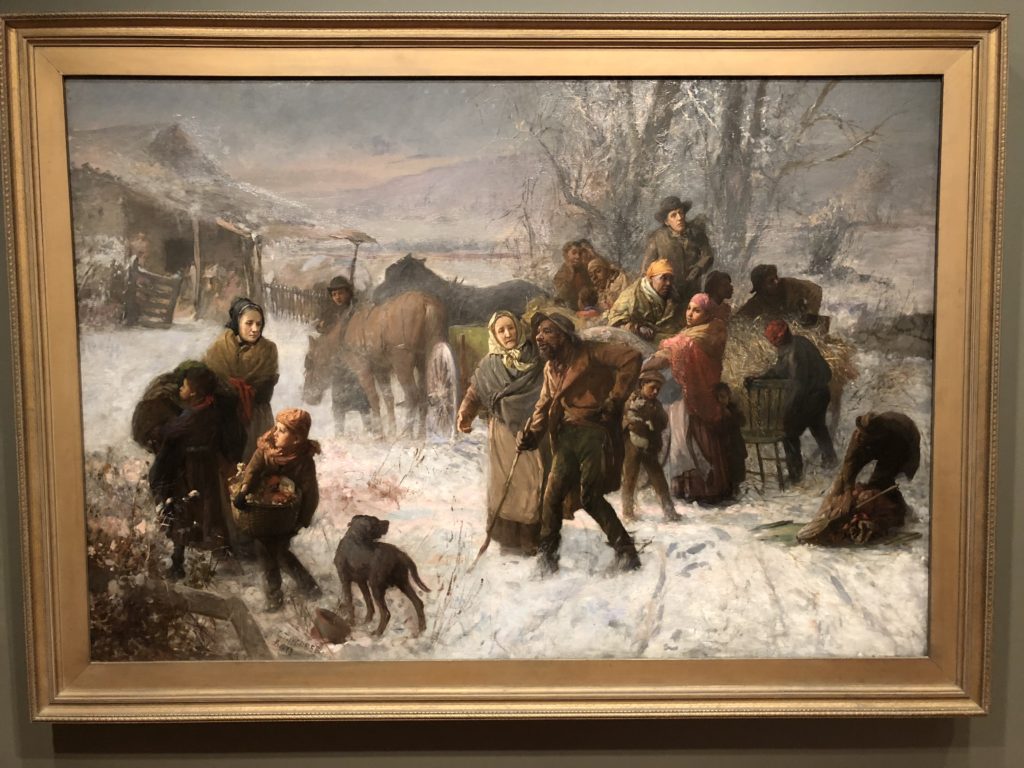
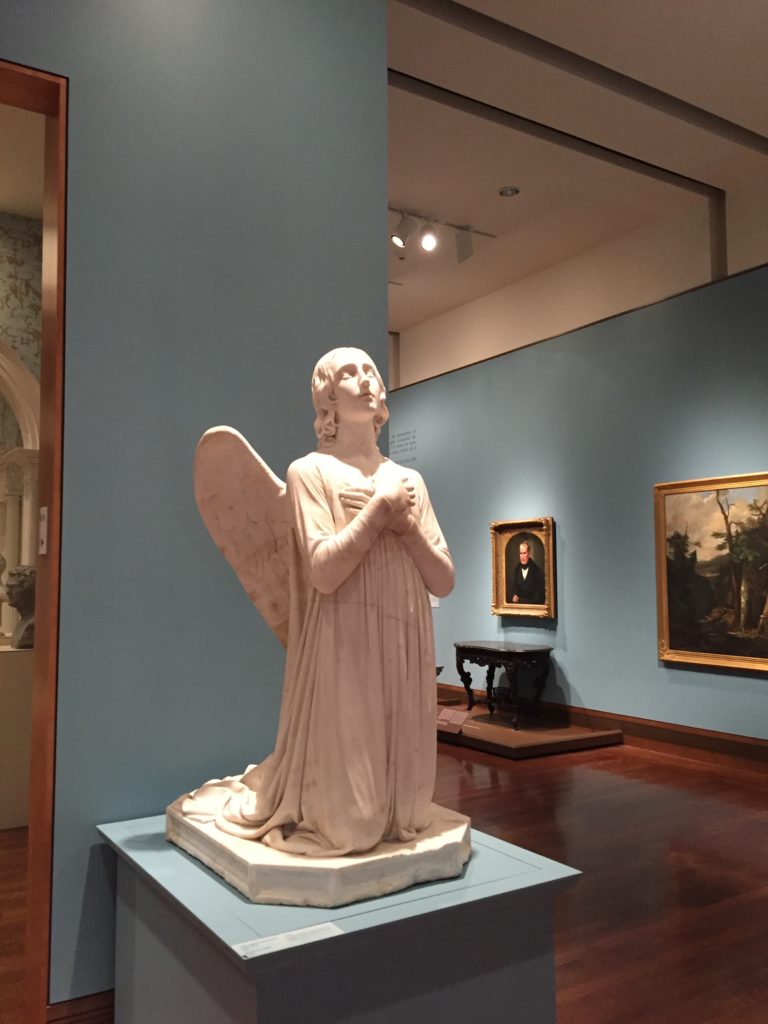
We left Cincinnati and carried on our travels northward through the state of Ohio, over-nighting in Dayton (urban pop: 720,000), a city closely associated with the invention of powered flight. In that spirit, we decided to take in the National Museum of the US Air Force. The huge museum is made up of four enormous hangers packed with some of the most amazing flight-related items. It starts with a great display on the invention of powered flight, and the story goes something like this:
After an unsuccessful venture in the printing business, Dayton-based brothers Wilbur and Orville Wright went into the bicycle business, opening several shops to sell and repair bicycles they made. It was a success, and generated enough funds for the brothers to dive headfirst into their real passion – building a heavier-than-air flying machine. The concept held enormous potential, but to be able to fly in a machine that was heavier-than-air meant solving three problems: (1) getting the required aerodynamic lift, (2) being able to control the machine (particularly in turns), and (3) developing a very light engine for propulsion.
The pair decided to tackle problem no.1 first, and started building gliders. They traveled to the lovely named Kill Devil Hills, a bunch of sand dunes a few miles south of the town of Kitty Hawk in North Carolina. The coastal area featured soft sandy surfaces and frequent winds – good conditions for experiments in flight. On three different trips between 1900 and 1902, the Wright brothers experimented with larger and heavier gliders. Early designs were based on work by other pioneers in the field, but by using an improvised wind tunnel and bicycle parts, the brothers performed important tests, novel calculations and crucial corrections needed to get the required lift. The second problem of control was solved with a tail and a movable upright rudder. The rudder doesn’t change direction like on a sail boat (in flying, this is done by leaning one wing down in the direction of the turn, or “rolling”), but rather it helps align the craft during and coming out of turns.
Finally, the Wrights added a light-weight gasoline engine (built together with one of their bicycle shop mechanics). Paired with a novel and remarkably efficient propeller, the team produced the wooden “Wright Flyer” – wingspan: 12 metres, weight: 274 kg, and cost: $1,000. On 17th December 1903, Orville Wright took the Wright Flyer on the world’s first powered, sustained, and controlled heavier-than-air flight. It lasted 12 seconds and traveled a distance of 37 metres, and looked like this:
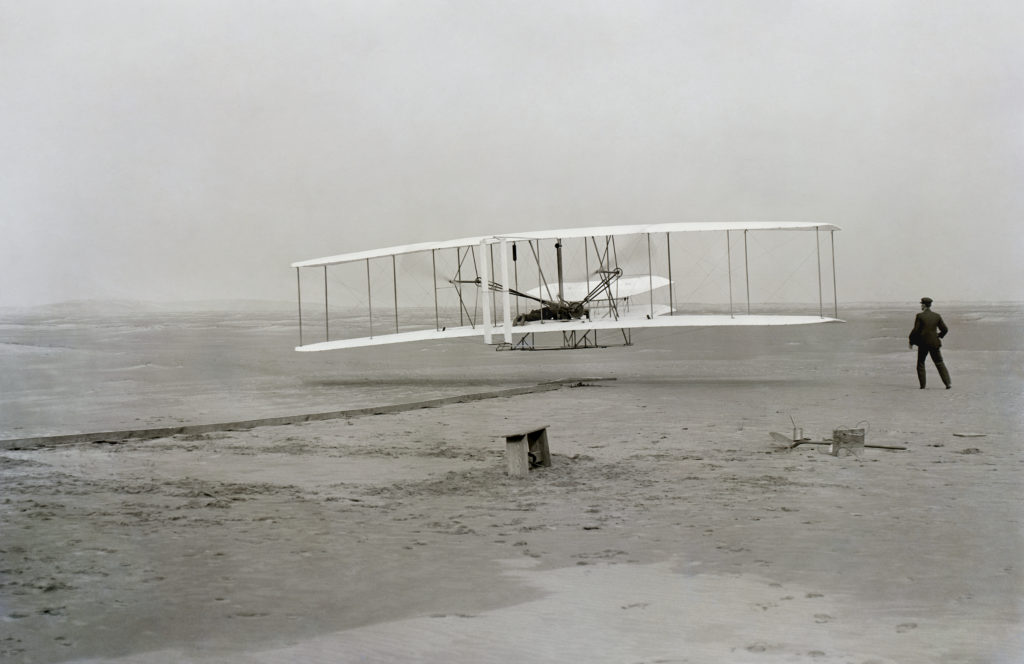
The fourth flight that day went 260 metres and lasted for about a minute. And so, heavier-than-air powered flight was born. The two went on to make additional breakthroughs in the following few years before business matters took over. The whole story is a great introduction to the incredible aircraft on display in the museum – here are some of our highlights:
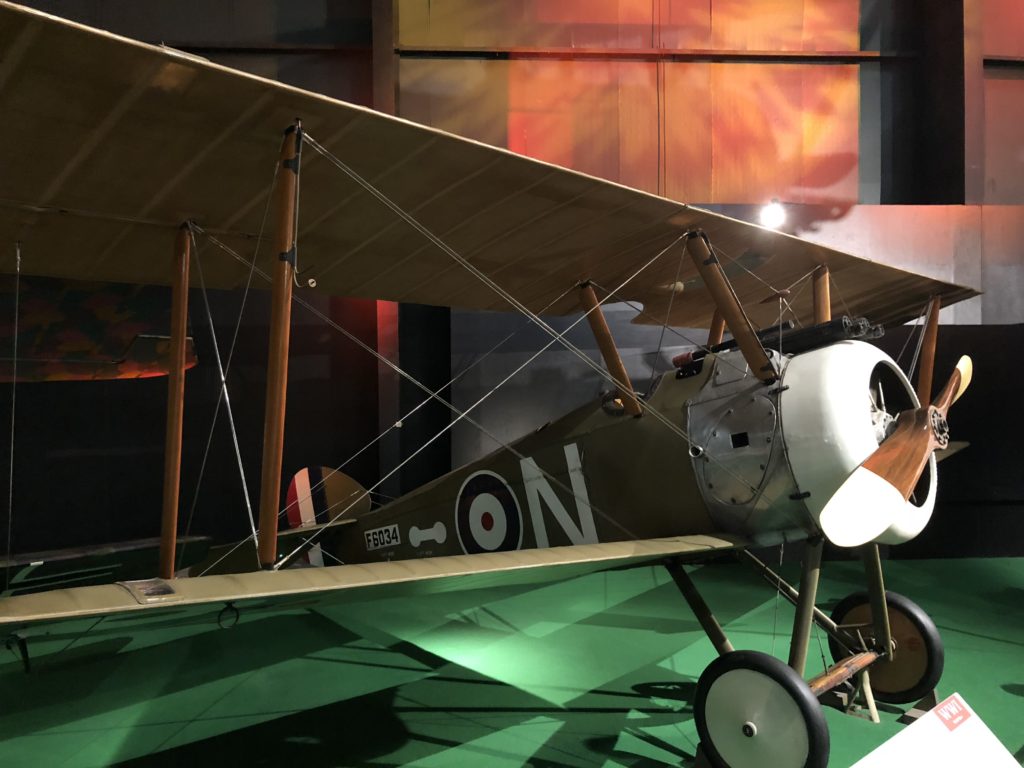
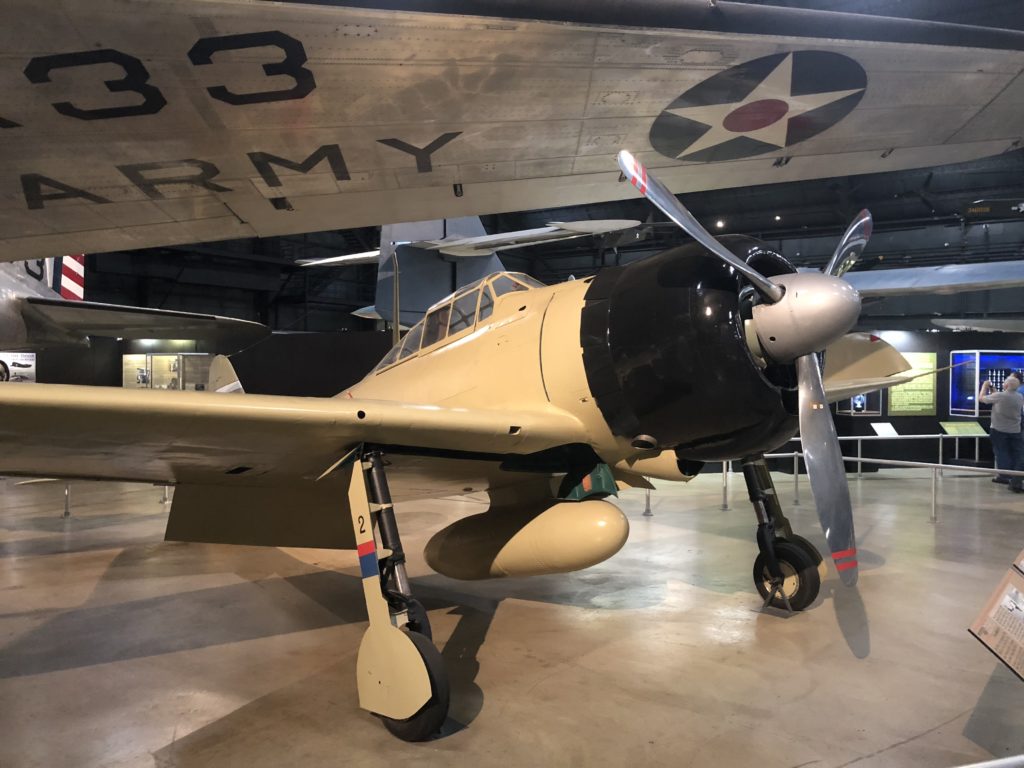
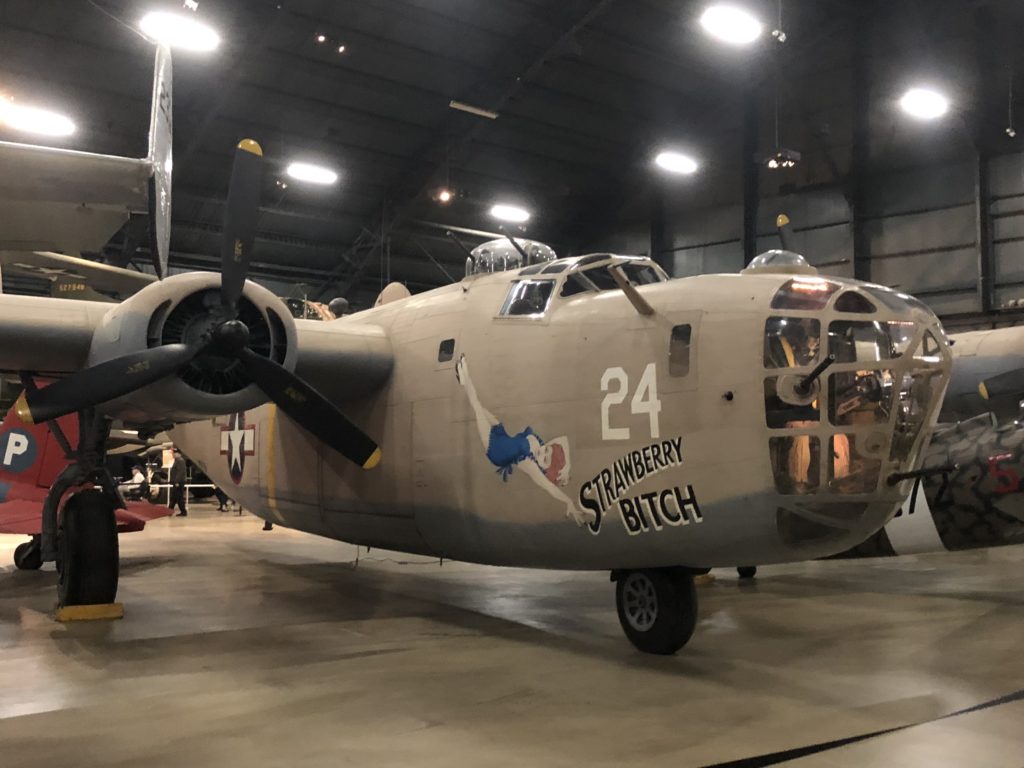
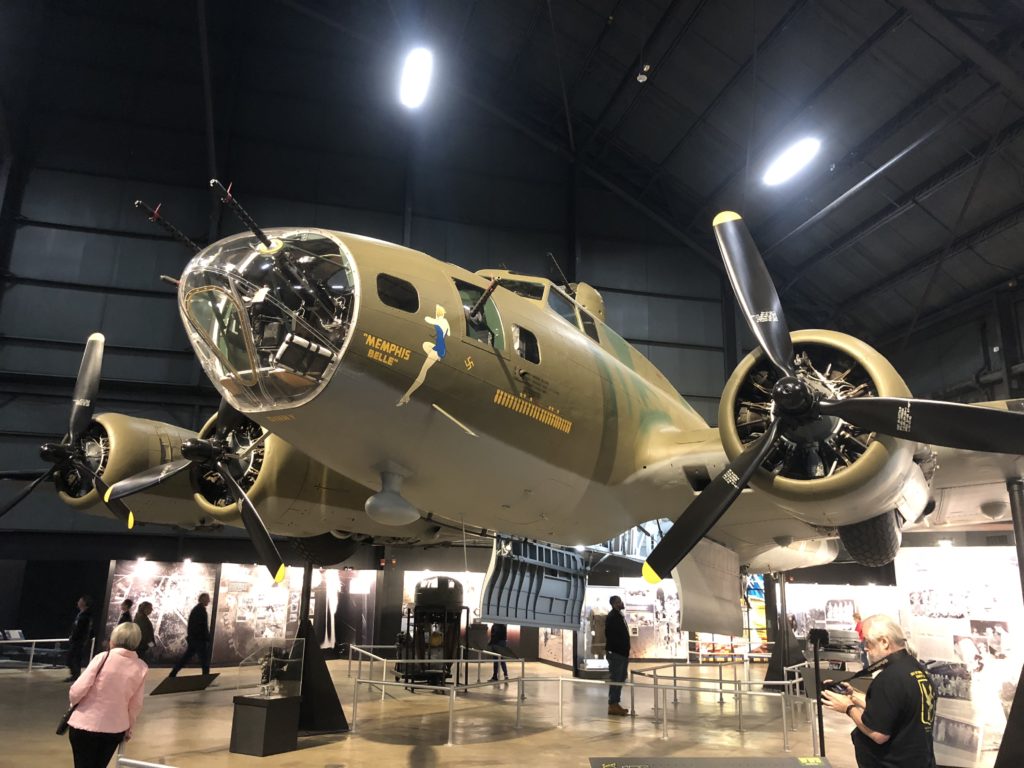
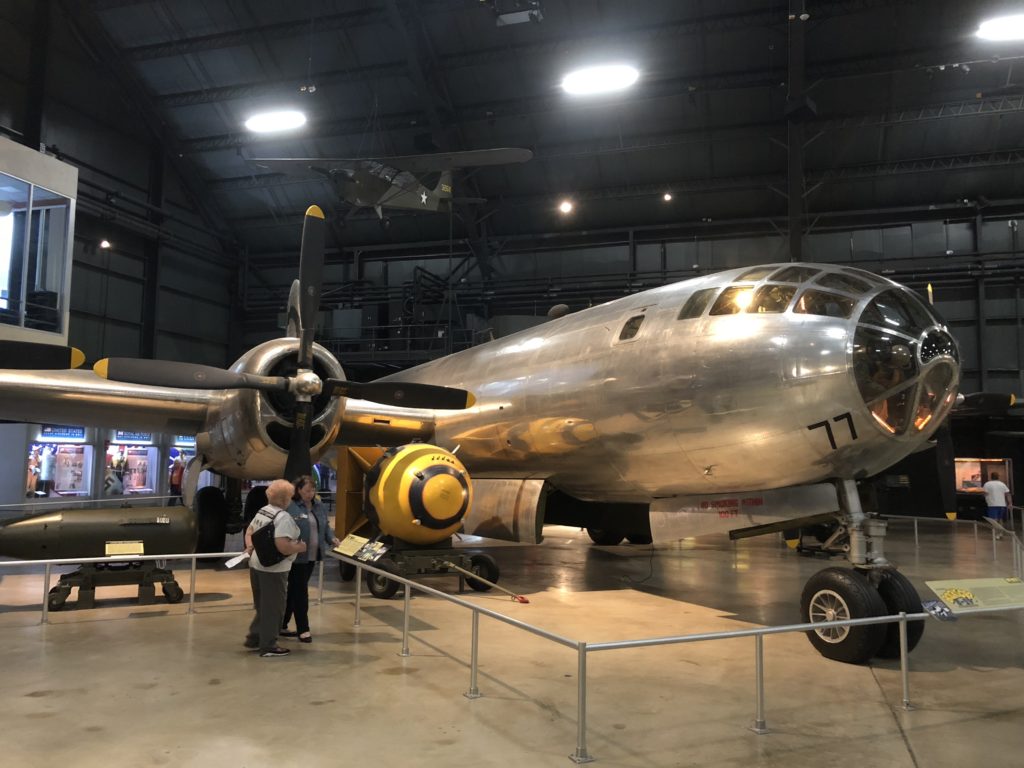
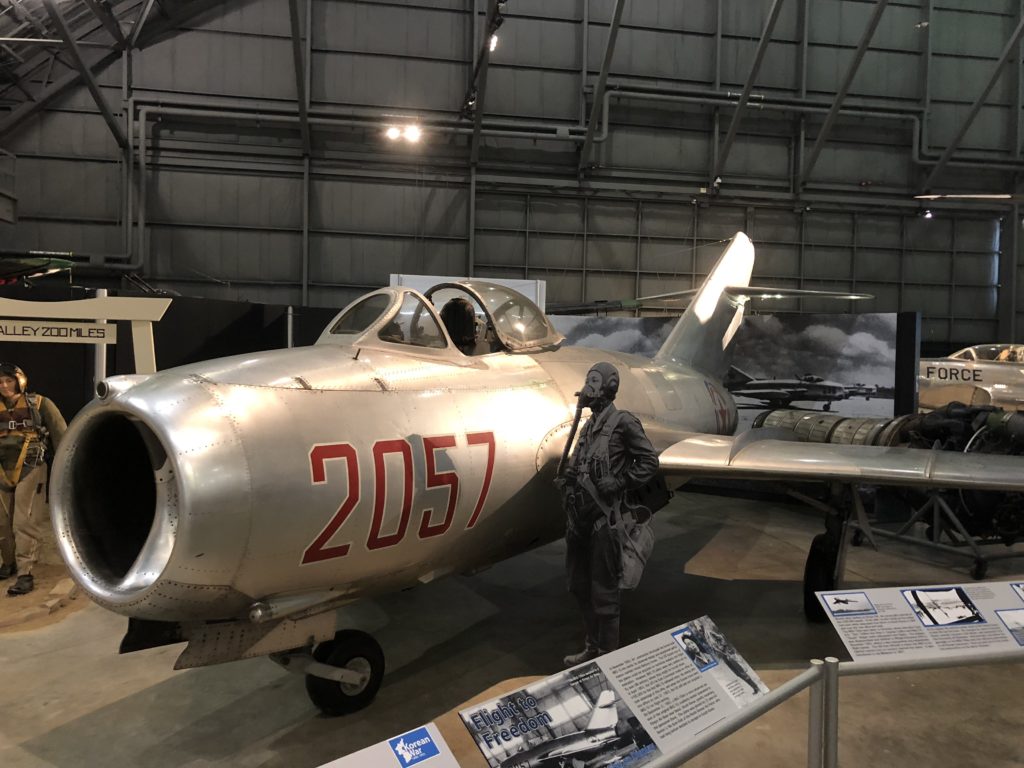
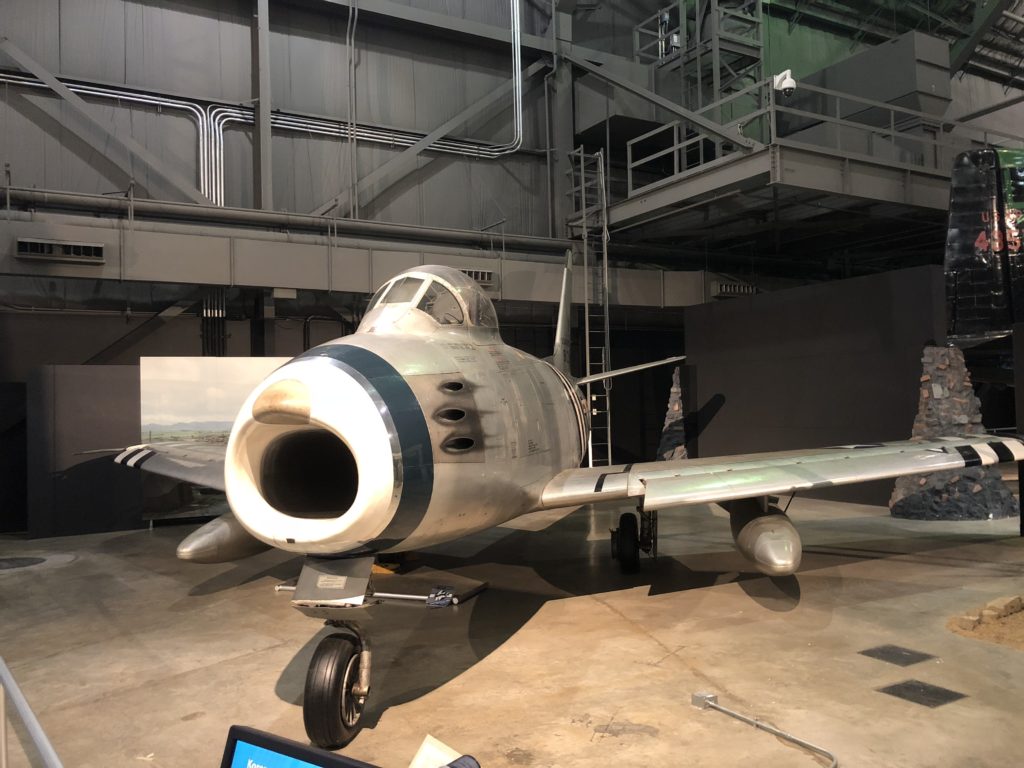
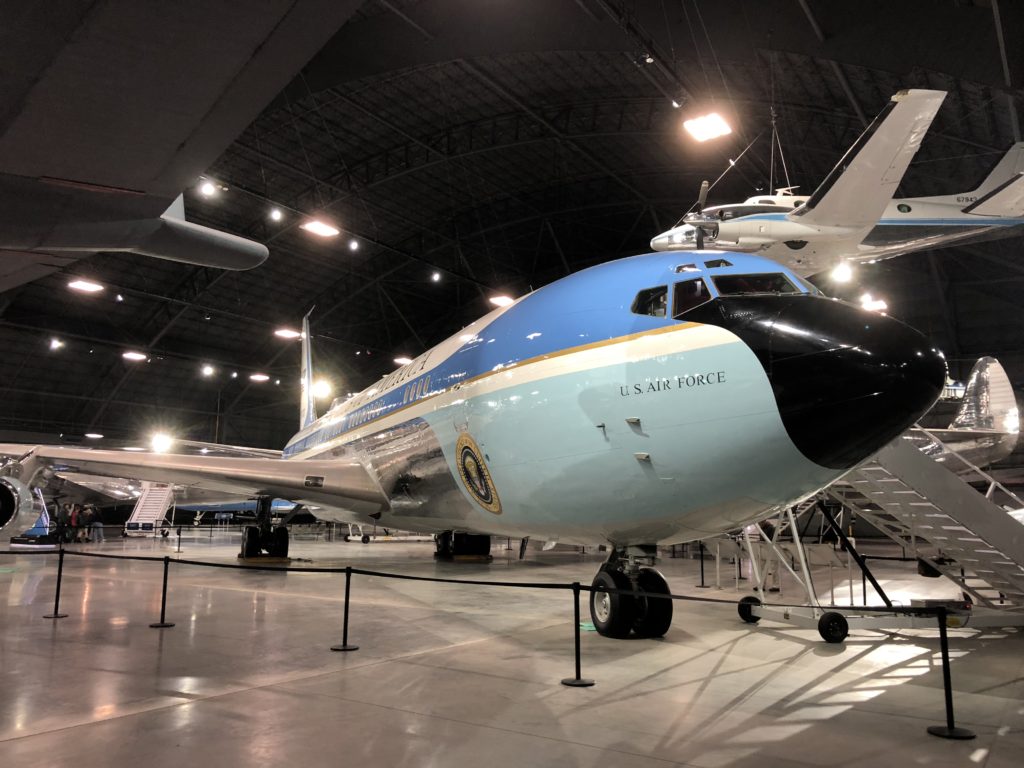


We squeezed in a Chick-fil-A on our way northward, saving the very best American fast food (by a long margin) for our final day in the United States. Next stop, Ontario, Canada.

